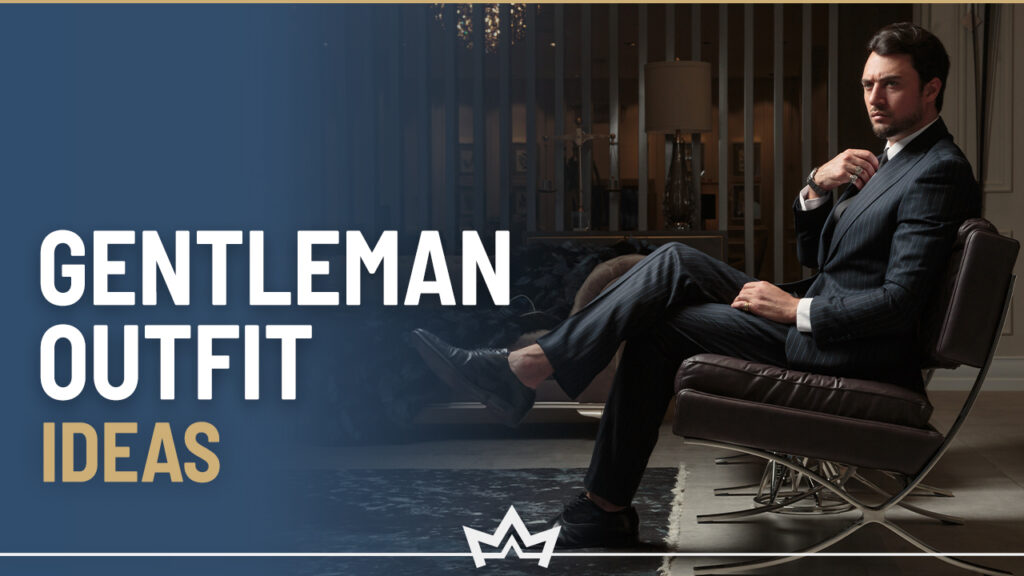While most table manners are common sense, gentlemen can still feel clumsy at fine dining.
That’s why there are certain guidelines for everyone to know their way around the table.
And table manners don’t just include things like eating with your mouth closed and understanding the nuances of utensil placement.
It’s a code to be comfortable at the dining table, have good conversations, and look like a disciplined pupil of sophistication.
Seating Etiquette: Who Sits Where?
There are two things here: first is the seating decorum of the table, and the other is the personal etiquette.
Before you sit down, it’s better to silence your phone to prevent distractions later.
If invited for supper, wait for the host’s lead and take your seat afterward.
If ladies or seniors are at the table, help them sit first. In Western etiquettes, at formal dining, gentlemen should stand when ladies or a senior guest joins the table.
The seating order will depend on whether the seats are free or assigned.
In free seating, sit on the closest seat as you approach the table.
In assigned seating for formal occasions, wait for the host to guide you.
The host will sit at the head of the table. Other seats will be in the order of seniors to junior, and couples are mixed up.
Table Manners while Seating
The personal seating etiquette includes maintaining a decent poster.
Keep your feet on the ground, back touching the backrest, and sit on the center of the chair’s seat.
Keep your head up, making it easier to engage in conversation, chew properly, and breathe comfortably.
Avoid slouching and prevent leaning away or toward the table.
While it might be tempting to lean back or lounge after eating a bit too much, it’s considered impolite in formal settings.
Also, be mindful of your hand’s position.
It’s okay to rest your forearms on the edge of the table between courses or while chatting, as long as you’re not leaning in too aggressively.
Traditionally, elbows aren’t placed on the table during meals. The only exception is after the meal when everyone is having conversations.
Table Settings & Utensil Use Etiquette
As you sit on the table, there’ll be a plate with plenty of silverware on each side.
The first thing is to figure out your bread plate and water glass.
Your water glass will always be on the right, always filled, and sometimes accompanied by an empty wine glass. The bread plate will be on the left.
For silverware, the knives and spoon will be on the right of your main plate. The forks will be on the left side.
The rule of thumb is you work your way from outside to inside. The host or restaurants usually plan the course synced with the placement of forks and knives.
Regarding utensil use, anything served on a flat plate should be eaten with a fork. Use the spoon for things served in a bowl.
There are several etiquette, although these two are most prominent in Western societies: the American style and the Continental style.
In American style, you keep the fork in your right hand, and the knife rests on the plate.
Every time you need to cut, the fork will go into the left hand. You’ll use the knife with the right hand and put it on the plate, eating with the fork afterward.
In Continental style, the right-hand knife cuts the food, and you’ll eat with the fork in the left-hand fork.
Proper Napkin Placement
Once seated, take the napkin from the table, unfold it, and put it in your lap. The napkin should always stay on the lap and will never go into the shirt.
Now, whenever the angles of the mouth feel dirty, always use one side of the napkin to clean it.
Never use the napkin to wipe your nose. If you ever need to wipe your nose, excuse yourself, leave the table, and use the restroom.
When leaving the table, place the napkin on the chair. After coming back, you place your napkin on your lap.
After finishing the meal, you fold the napkin in a somewhat representable way and place it beside your plate.
During Eating Etiquette
Ideally, you should wait for everyone to get served, and then you can start eating. In a formal setting, you wait for the host’s cue to start eating.
Making assumptions about the food, like pouring salt before eating, disrespects the chef. Don’t be that guy.
Take smaller bits, as you’ll probably be having a conversation. Cutting one bite and then eating it is always better than cutting everything at once.
Don’t scarf down the food and eat at a normal speed.
It’s best to bring the fork close to the mouth, not vice versa. Plus, always eat with your mouth closed.
Don’t reach over the people and pass the food from left to right.
It’s best to ask someone to pass a distant food than reach out yourself. Always pass the salt and pepper together.
Try a few bites at family dinners, even if something you don’t like is served. Refrain from rejecting the food completely.
Excuse yourself politely if you need to leave the table during the eating. Keeping the fork and knife in a cross will be a gesture that you’re not finished eating yet.
Etiquette for Ending a Meal
Eating food at a steady pace is always the best option. This way, you’ll end the meal at the same time as others.
Keeping the utensils at roughly 10 and 4 o’clock positions would be a gesture of finishing your food.
Leave the napkin on the table. But only leave the table once everyone is finished.
Please wait for the host’s queue, thank them, and leave graciously.
Saying individual goodbyes to everyone at the table can also be a good gesture.
Read more: Full gentlemen’s etiquette guide.



